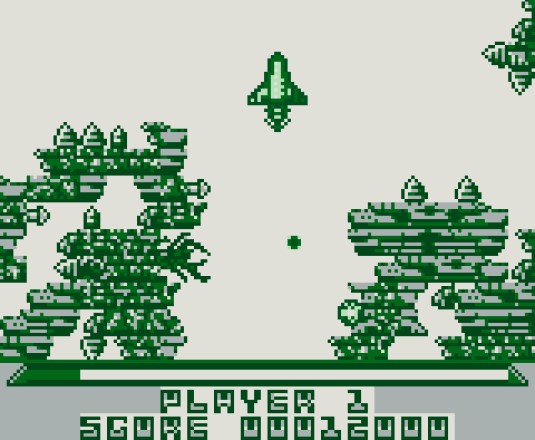
The developers, the Bitmap Brothers and their publishers, Mirrorsoft weren't complaining. It cemented the studio as noted technical virtuosos on the 16-bit micros, conferring on them a loyal following in the press and gushing reviews to come. And the money made probably stopped Robert Maxwell dipping as deeply into the pension funds as he might. Yet Xenon 2 persisted beyond the Amiga and ST. A conversion to the Sega Master System was next. A curious choice but on a machine not overly blessed with vertical scrolling shooters, an understandable one. It looked good by 8-bit standards but was chuggingly slow to the point of unplayability - but it scored respectably in the magazines and sold reasonably. I guess gamers were a lot more patient then. The Mega Drive version came next, which I picked up for a song early in my retro-hunting career. And it's pretty poor. This port looked the part, but the rendering of Megablast is weak and the gameplay paled against the competition. Without the bells and whistles, the faults were magnified. No autofire function until it's purchased from the in-game shop, and then the rate of fire is so slow enemy swarms simply dance through the bullet streams. Terrible level design, and one of them missing in the MD version made for a pointless waste. Then came the curve ball port: this version.
For a game designed to show off the power of 16-bit gaming, it's unlikely the Bitmap Brothers intended ever porting their flagship game to the most primitive, monochromatic hand-held console on the market. But it happened and, if anything, the Game Boy version is the best of the lot. For the uninitiated, the baddies have planted bombs throughout history to wipe lovely humans from the timeline. This was the foil for five stages of shoot 'em up mayhem, where the player has to dispatch legions of trilobite, molluscs, squidgy worm things, slugs and weird pulsating blobs with no correct animal analogue. Except on the Game Boy's tiny screen they're just wobbling collections of pixels. These things also have the propensity to enter the screen from anywhere, so wits are required. The end of the stage features the customary boss, which includes a mine spewing nautilus, a giant spider, a viperfish and an assortment of other lovelies. Pretty standard mechanics so far.
Xenon 2 does enjoy the same original feature in all its versions: a shop. All enemies or enemy waves drop tokens, which can be traded in at the shop for power ups. There are plenty to choose from, with rapid fire, rear and side shots, lasers, missiles, and speed ups being the weapons of choice. However, because this is a British-developed game and the temptation to be a bit naff was too difficult to resist, duff power ups are available. These include the expensive Bitmap Shades which does nothing but dims the screen for a short while. And Super Nashwan Power, which temporarily gifts an arsenal of power-ups. In a triumph of poor game design, this applies for something like 10 seconds shortly after leaving the shop and your ship isn't assailed by anyone. But what is a nice touch, present in all versions, is that power ups are physically added to the ship - extending the sense of invulnerability common to games of this sort, and ensuring such overconfidence will be the death of you. Another feature is you can reverse and force the screen to scroll backwards - except for boss fights. This is essential as daft levels mid-game feature maze-like structures that often resolve into dead ends and lengthy backtracking without any enemies to kill. Edgy design or a simple irritant? You decide.
Unlike the Sega ports, the Game Boy has all the levels and everything else is here. The daft premise, the awful level design, the deep sea baddies, the lot. The game plays better than the other versions because the enemy sprites hit boxes are larger, making for a less frustrating game. But this isn't to say Xenon 2 has shed the Amiga/Atari ST trappings for its quality to shine through. The game is more playable, yes, but it's no masterpiece. Nintendo's early Game Boy title, Solar Striker, is a better blaster. By boiling it down to its constituents the simplicity of the game stands revealed, it shows the cracks the lick of 16-bit paint the developers expertly covered. But also its simplicity is what made it ideal Game Boy fodder. Embarrassed by the riches of so many titles that were pick up and play (though it had its share of rpgs and, bizarrely, god games), Xenon 2 slotted into the console's library seamlessly. And it probably would have been ignored as so many others have fallen into barely-played obscurity, were it not a curio port of a 16-bit tech demo.
No comments:
Post a Comment